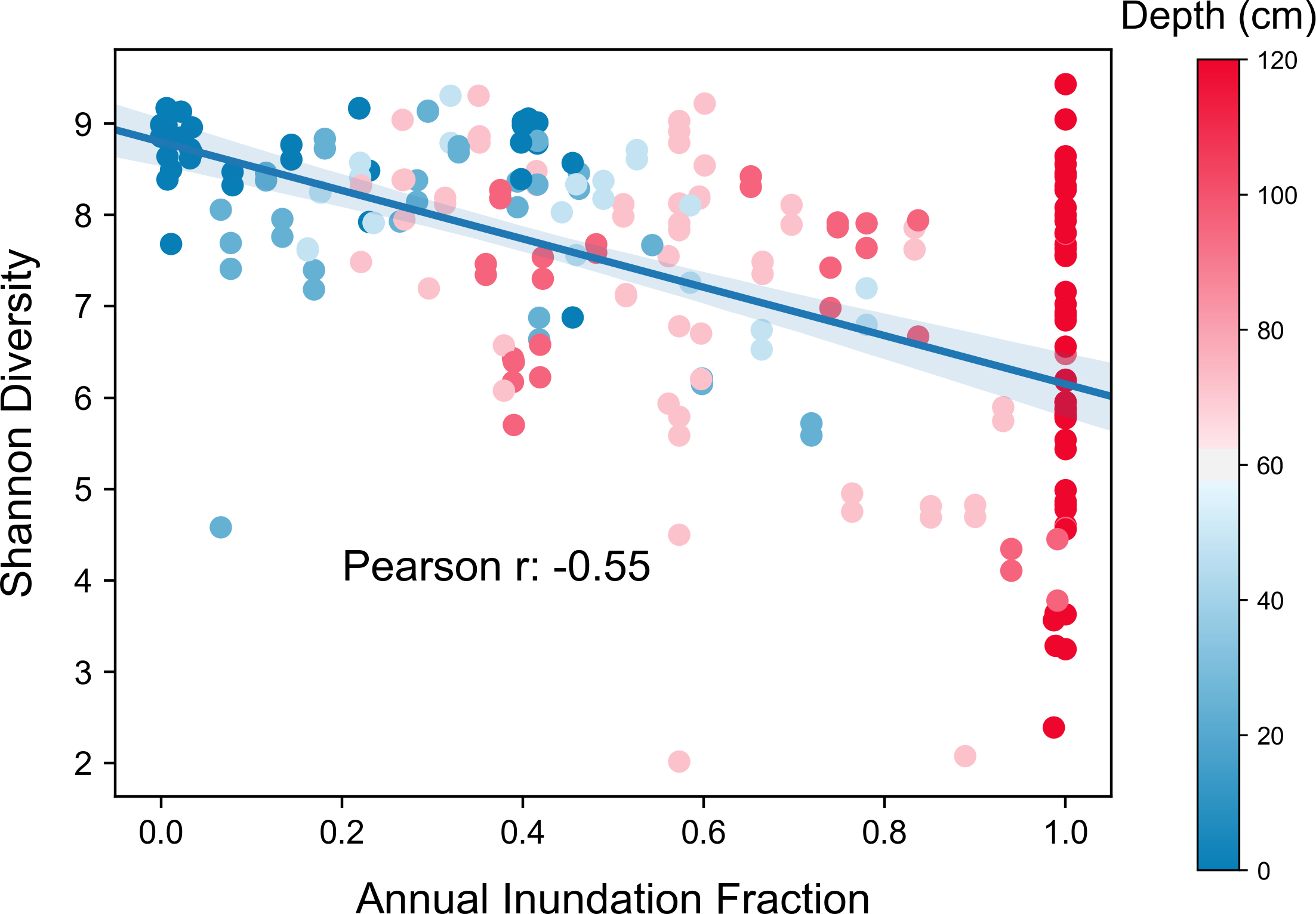Soil Compositional Changes Influence Microbiology

A team of researchers from Northwestern (from the research groups of Profs. Aaron Packman and George Wells), The Nature Conservancy, and Loyola University demonstrated how precipitation and water levels influence microbial ecology in Gensburg Markham Prairie. This is one of the first studies showing that long-term variations in water levels control microorganisms in prairie soils. These findings are published in an article titled, “Soil hydrology drives ecological niche differentiation in a native prairie microbiome”, which has been selected as the Editor’s Choice article for FEMS Microbiology Ecology.
While the impacts of soil moisture on soil microbiome diversity and composition are well-characterized, the influence of hydrological regime has been overlooked. As precipitation patterns are altered by climate change, understanding the impact of soil hydrology on community structure and function is critical. In this study, water level was continuously monitored for over a year in a Midwestern prairie-wetland at 10 cm depth increments up to a depth of 120 cm in 10 locations. They analyzed microbiome composition and environmental factors in soil cores collected from this unique spatially distributed, longitudinal data set. They demonstrated that the fraction of time that each sample was inundated explains more variability in diversity and composition across this site than other commonly assessed environmental factors, such as soil pH or depth. Finally, they show that these compositional changes influence abundance of ammonia oxidizers. The observed patterns in community composition and diversity are fundamentally regulated by the interaction of water with a structured landscape, particularly an elevated sand ridge characterized by drier conditions and a lower-lying wetland with more clayey soils. Similar processes are generally expected to influence the biogeography of many terrestrial environments, as morphology, hydrology and soil properties generally co-vary.

With each issue, FEMS Microbiology Ecology Editors select a single article that describes a significant advance in the field. This article is then made freely available and featured on the journal homepage and on the FEMS Journal portal. Other authors featured on this work include Jim Griffin, Loren Haug, Vivien Rivera, Liliana Hernandez Gonzalez, and Prof. George Wells.
To read the publication, click here.
